Get Your First Tattoo
Planning Your First Tattoo

From school emblems to Celtic designs to photo-realistic portraits, tattoos can be a great way to express your personal style. If you've never gotten a tattoo before, you don't have to walk into the tattoo shop blindly. To get your first tattoo, you'll need to plan the right design, choose and schedule an appointment with a tattoo shop, and prepare beforehand to help the appointment run smoothly. With proper planning, getting your first tattoo can be a great and safe experience.
Planning Your First Tattoo
Pick your first tattoo's design several months ahead of time. Deciding on a first tattoo is an individualistic decision. You may find inspiration from pictures of tattoos online, symbols or images with personal meaning, or a design that you find beautiful. Spend several months thinking about the design before you get the tattoo to ensure it's something you want on your body forever.
- If you're not sure whether you're ready for a tattoo, take your time. You can always get the tattoo later when you're sure that you're ready.
- If you're worried about the pain, select a small, simple tattoo.
- You can also design your own and bring it in for the tattoo artist if you can't find a design you like.

Choose a part of your body that is less painful to get tattooed if you're scared.
If you've never gotten tattooed before, picking a less painful place to get tattooed is a good idea. You'll be able to gage your pain tolerance for tattoos without experiencing more pain than you can tolerate. And, if you want to tattoo a more sensitive body part, you can always do so for your second or third tattoo.
- The least painful places to get a tattoo are your thighs, biceps, calves, or other fleshy places.
- Avoid getting tattooed on your inner knees, rib cage, armpits, nipples, eyelids, or genitals for your first time.
- However, you don't have to let fear limit your choice! Don't be afraid to just for it and get the design you want where you want it.
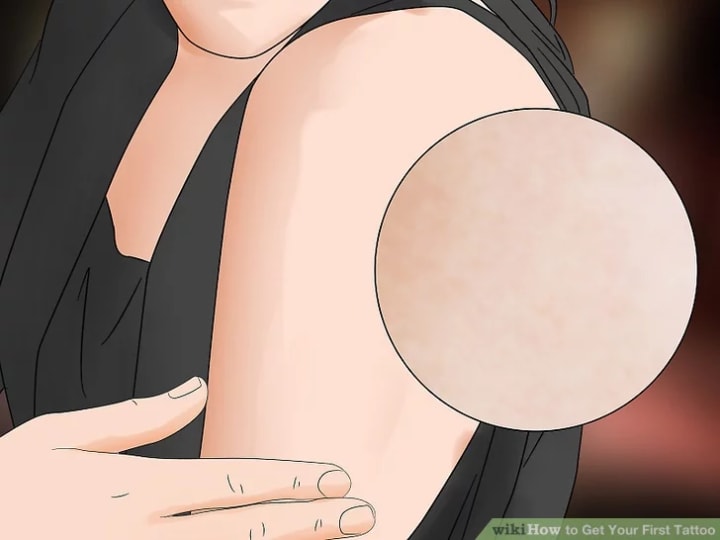
Plan to put your tattoo on clear, healthy skin.
Although you can cover thick scars or uneven patches of skin with a tattoo if you want, the image will be clearer on clear skin. Choose an area that doesn't have many significant markings on it to make your skin easier for your tattoo artist to work with.
- Moisturising the area every day with shea butter or cocoa butter for 1-2 weeks before your tattoo appointment can also help make the skin smooth and supple. Or, take a vitamin designed to strengthen your hair, skin, and nails, or a supplement like biotin, to improve the appearance of your skin.
- Avoid getting a tattoo on sunburns, bruises, or rashes. Not only will this hurt more than a regular tattoo, but it can increase your likelihood of infections and scarring.
Choosing a Tattoo Artist

Research local tattoo shop reviews.
Search for tattoo shops in your area and check out the online reviews and ratings. If any of your friends have tattoos, ask them where they got their tattoo and whether they'd recommend it.
- Look for portfolios and reviews on social media as well.
- If the tattoo shop is new and doesn't have as many reviews, contact the shop and ask for testimonials.
- Don't choose the "cheapest" tattoo shop unless you don't mind the quality. Because tattoos are permanent, however, choosing a more expensive tattoo shop may be worth it if they have better reviews.

Ask for portfolios from the shop's tattoo artists.
Most shops offer photos of their work either on their website, in person, or by request. Compare each shop's work to your own vision for the tattoo, and choose the tattoo artist that best matches your personal style.
- Art styles can vary among tattoo artists at a shop. If you see a tattoo that reflects your own style, schedule an appointment with the specific artist who made it.

Check out the tattoo shop in person.
Once you've found a tattoo shop with good reviews and a portfolio you like, visit the shop and meet the artists before you schedule an appointment. You can ask the tattoo artist questions, schedule an appointment with a specific artist, and get a sense for the store's atmosphere before deciding on it.
- Pay attention to the tattoo shop's cleanliness as well, and ask about any training or certifications the artists have completed.
- Find out the laws regarding licensure and procedures in your area and make sure the shop you choose adheres to all of these regulations.
- Ask an employee to explain the hygienic precautions the tattoo shops take, like whether they use an autoclave and sterilized or disposable tools.

Set up an appointment with the tattoo artist.
After you've visited several tattoo shops, choose the artist and shop you liked most (factoring in quality, safety, and personal style among other things). Schedule an appointment over the phone or in person with the tattoo artist to finalize your decision.
- To avoid impulse decisions, try to schedule your appointment at least a week or 2 in advance. That way, if you chance your mind, you can always cancel it.
- While some tattoo shops do offer walk-in appointments, you're more likely to get a tattoo you're satisfied with if you schedule in advance. This gives the artist more time to draw or design the tattoo.

Discuss your design plans with the tattoo artist at least several days in advance.
Most tattoo artists need a few days to prepare stencils, inks, and other tools they'll need for your tattoo. Talk with your tattoo artist about your design plans in-person or by email or phone at least 2-3 days before your appointment.
- Send or bring in any image references or designs you've based your tattoo inspiration from for your tattoo artist to study.
Eat before you go to your appointment.
Have a small, healthy meal before heading to the tattoo parlor. Eating ensures you have enough energy to make it through your appointment without fainting.
- Choose a meal with protein and complex carbs. Avoid refined sugars.
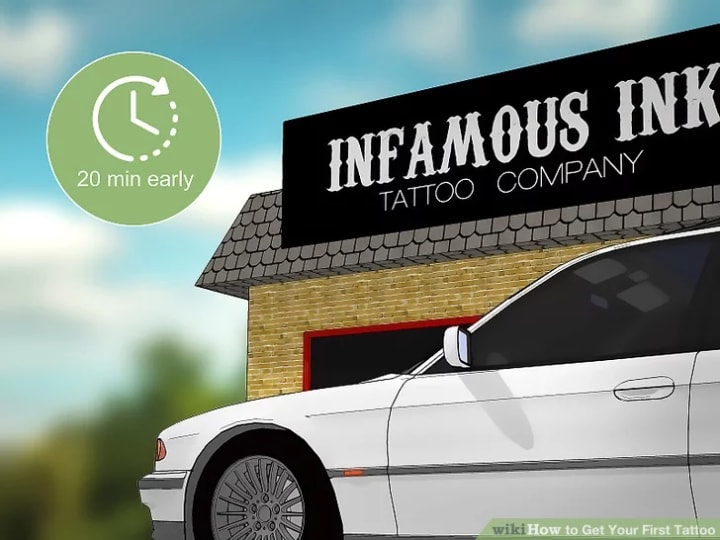
Arrive at least 15-20 minutes early to your appointment.
Before the appointment, you may need to fill out paperwork. Give yourself at least 15 minutes to complete that process and, if you want, talk with the tattoo artist and ask any questions.
- Bring a state-issued ID to your appointment, as you may need to verify your age.
- If you're nervous about getting a tattoo, arriving early also gives you time to calm down and adjust to the store environment.

Discuss your medical history with the tattoo artist.
If you have any medical conditions, ask your doctor if it is safe for you to get a tattoo. Then, let your tattoo artist know about your recent medical history, particularly chronic conditions. This will make your tattoo artist aware of any possible risks and precautions they may need to make.
- Bring a doctor's note if you have a chronic medical condition, like diabetes or epilepsy. Some tattoo artists require a note to ensure your safety.

Hold still while the tattoo artists shaves and cleans your skin.
When the tattoo artist's ready to begin, they will clean the area you want to be tattooed with rubbing alcohol and shave it with a disposable razor. Stay as still as possible while the tattoo artist prepares your skin and, if you have to sneeze or make a sudden movement, warn them first.
- If you have sensitive skin, let the artist know so they can shave and clean your skin gently. Keep in mind, however, that the tattooing process may hurt more on sensitive skin.
Inspect the stencil as the artist applies it to your skin.
After cleaning your skin, the tattoo artist will likely use soap or stick deodorant to transfer the stencil on your skin, or draw it right on your skin with a special marker. Check the stencil before the artist transfers it on your skin for any concerns or mistakes you notice before the artist begins tattooing.
- The artist will follow the stencil while working on your skin to tattoo a clean, mistake-free image.
- Some artists may not use a stencil and trace the image on your skin instead. If this is the case, inspect the traced image before the artist tattoos it on your skin.
Getting and Caring for Your Tattoo

Take steps to manage the pain during the appointment.
Depending on where you're getting tattooed, you may feel mild to moderate pain or pressure. Try dulling the pain through breathing exercises, talking to the tattoo artist, or listening to music during the appointment.
- Avoid taking over-the-counter pain relievers before your appointment, as these can act as blood thinners and make you bleed more.

Tell the tattoo artist if you're about to move.
Because tattoos take time and can irritate your skin, staying still for the entire appointment is tough. To prevent mistakes, however, hold as still as possible and let your tattoo artist know before you move.
- Your tattoo artist may suggest multiple appointments if you're getting a large or complex tattoo.
- If you feel antsy, you can always ask the tattoo artist for a break. If the tattoo is large, it's normal to take a few breaks during the session.

Give the tattoo artist a tip after the appointment.
If you're satisfied with your new tattoo, give the artist a tip afterward! Tipping is customary at tattoo shops and shows appreciation for the artist's hard work.
- Let your artist know if you're not satisfied with the design. They may be able to retouch or add certain areas, depending on the issue.
- Plan on tipping around 20% in cash for your tattoo artist.
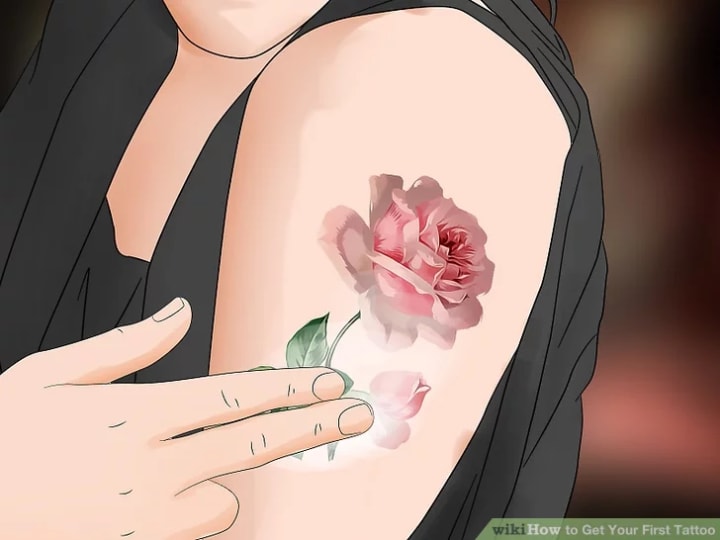
Follow your tattoo artist's aftercare instructions.
After the artist finishes your tattoo, they will probably give care instructions while your tattoo heals. Depending on the tattoo, this may involve covering the tattoo with a bandage, washing it regularly, or applying antibacterial creams.
- Ignoring the aftercare instructions can cause infections. To help your tattoo heal quickly and without issues, follow the instructions as closely as possible.
About the Creator
Zulqarnain Haider
I write short stories and poetry. I hope you find yourself in between the spaces of my words.


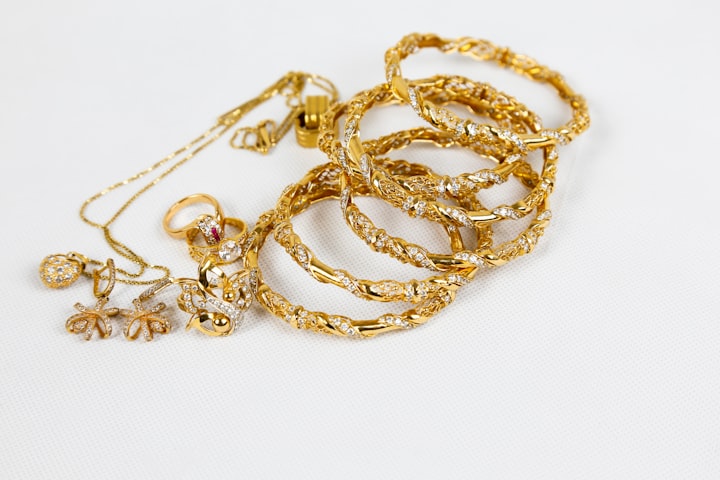
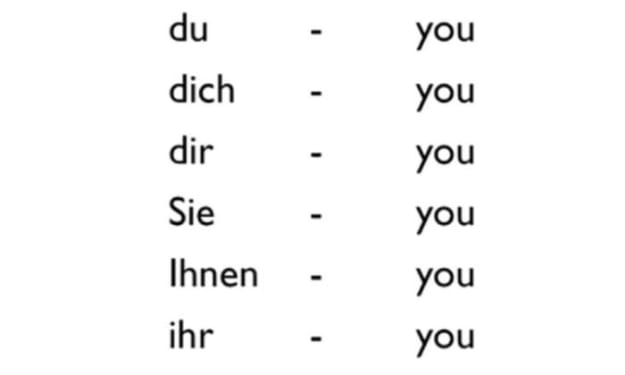


Comments
There are no comments for this story
Be the first to respond and start the conversation.